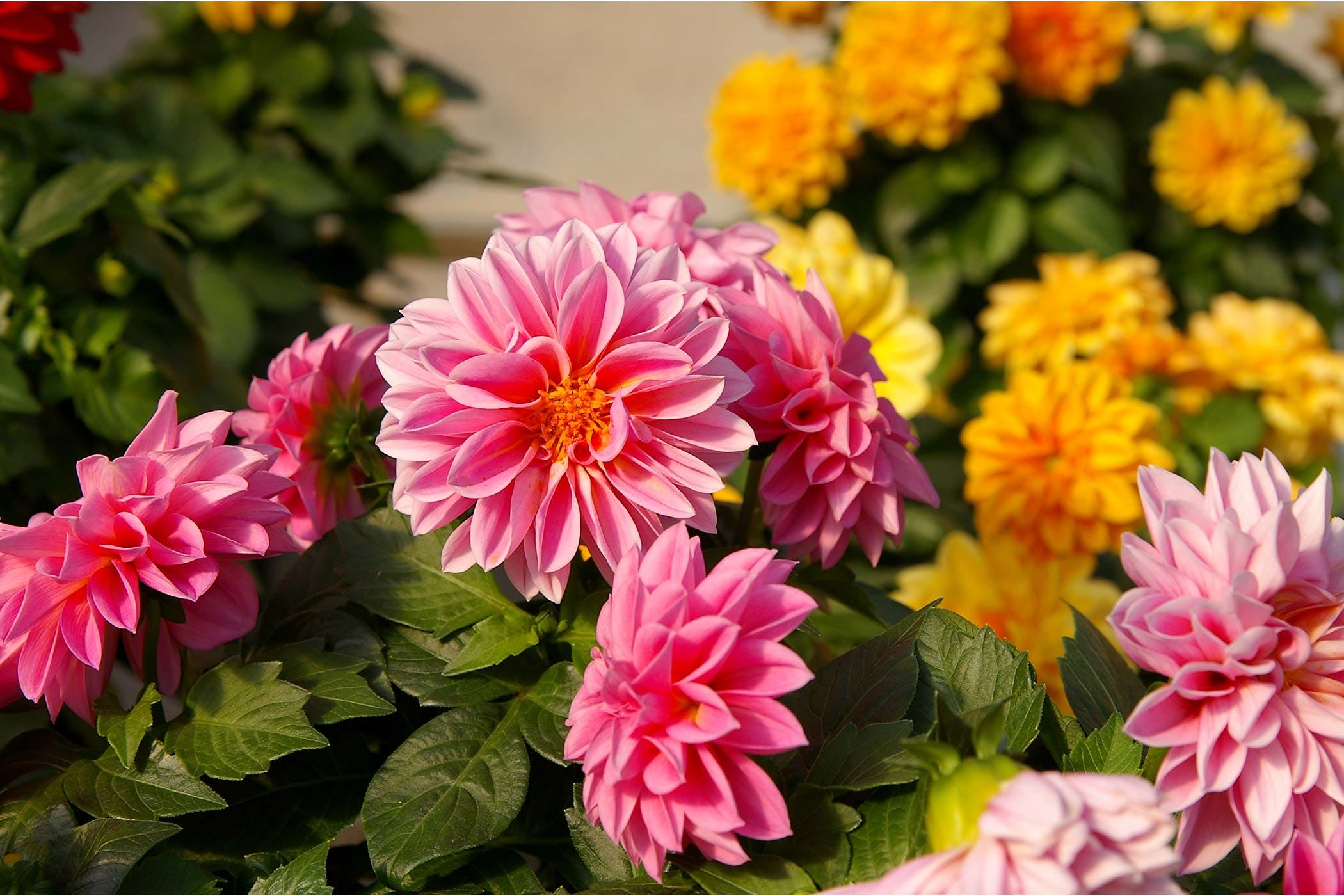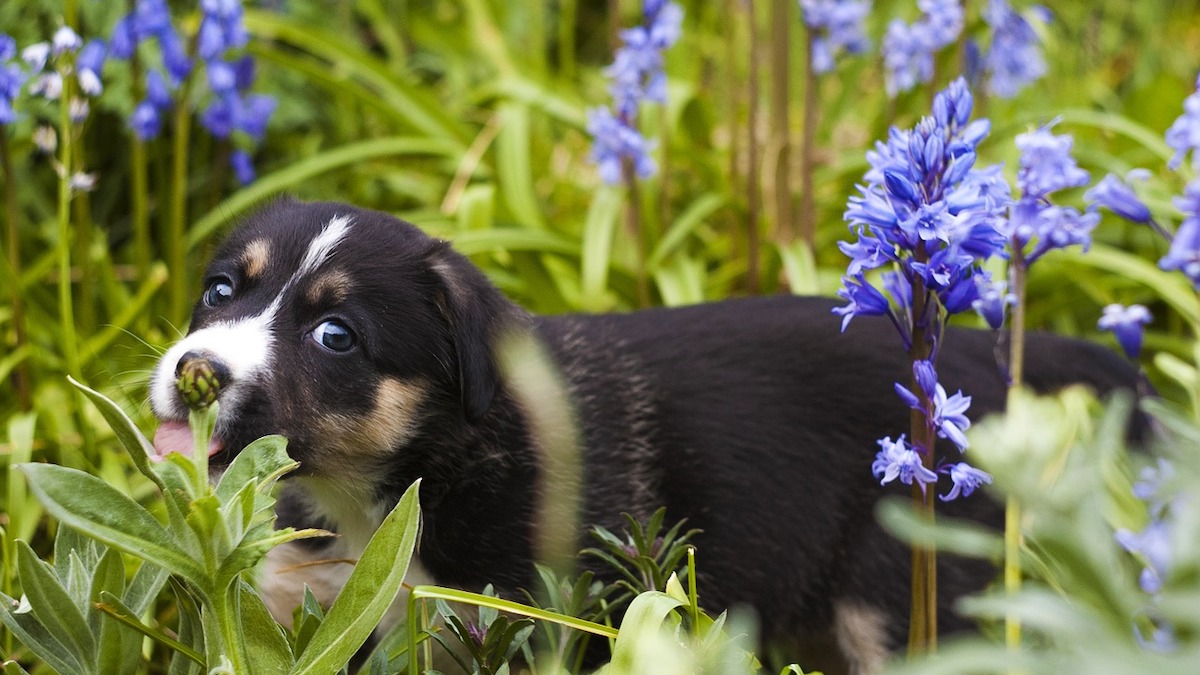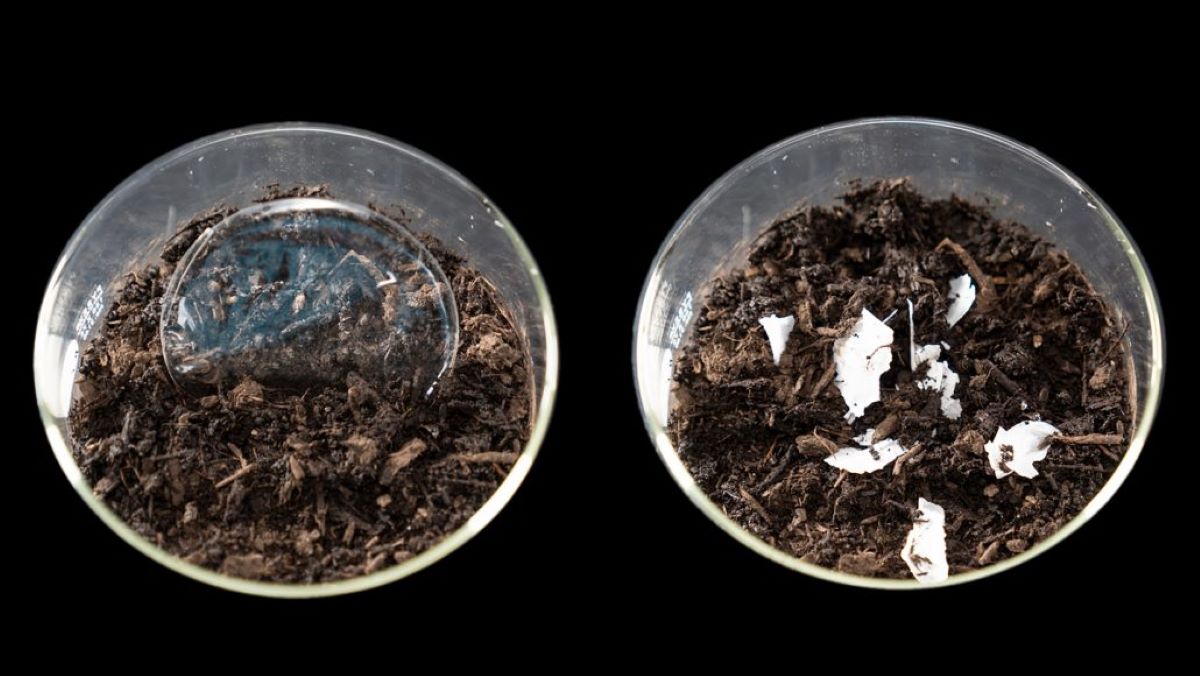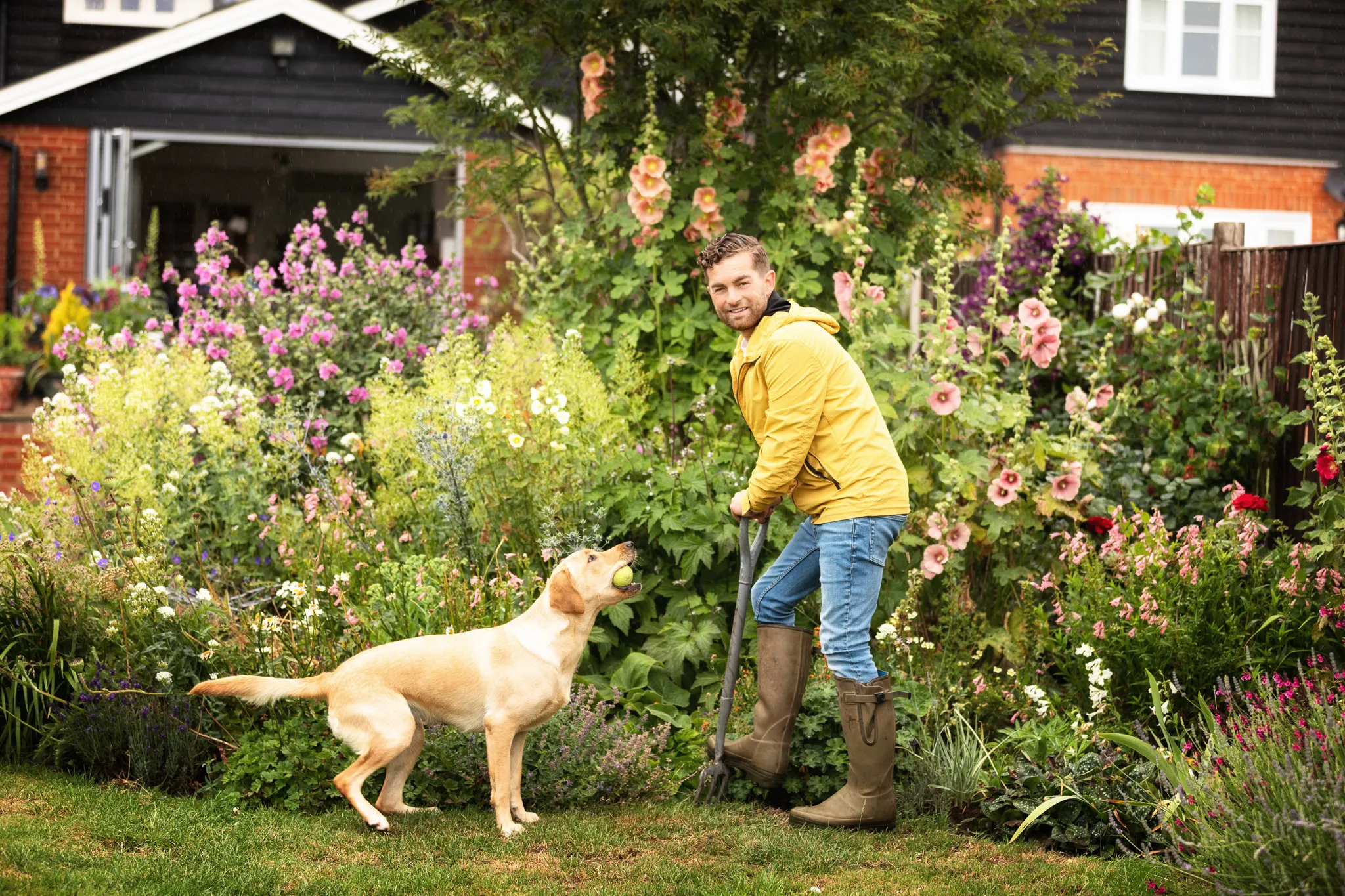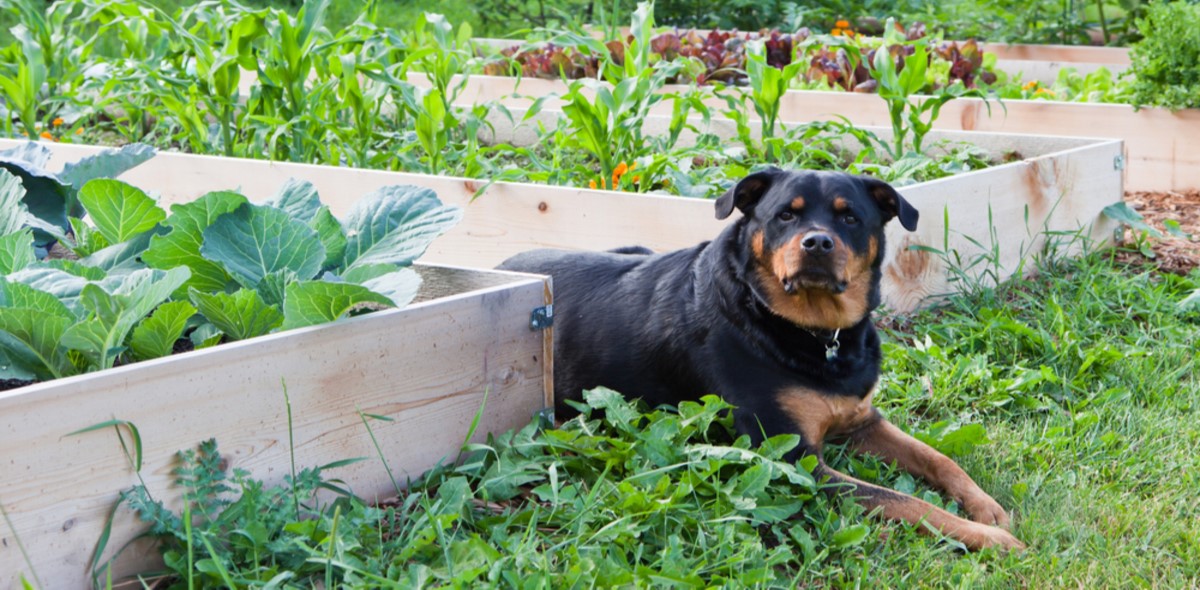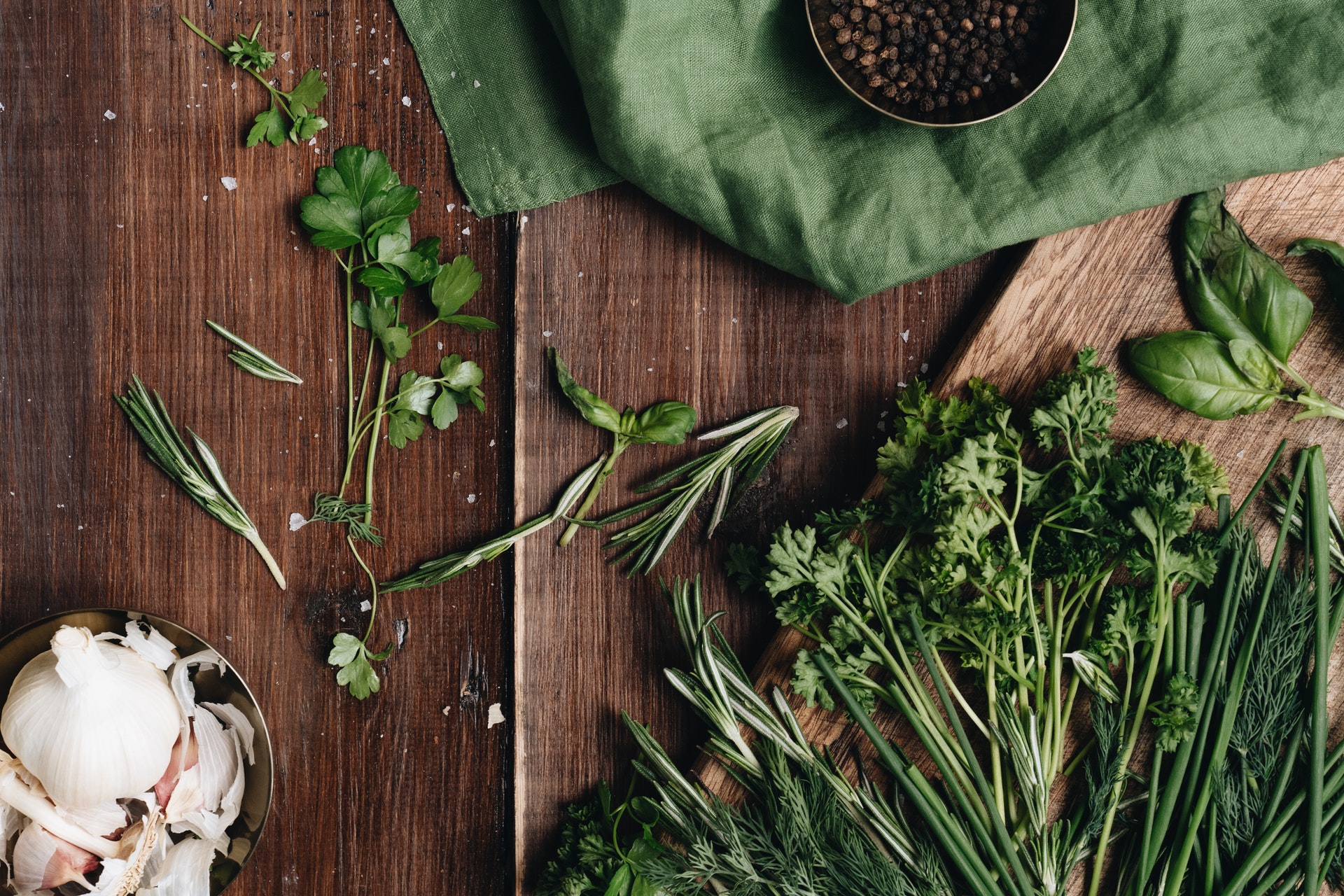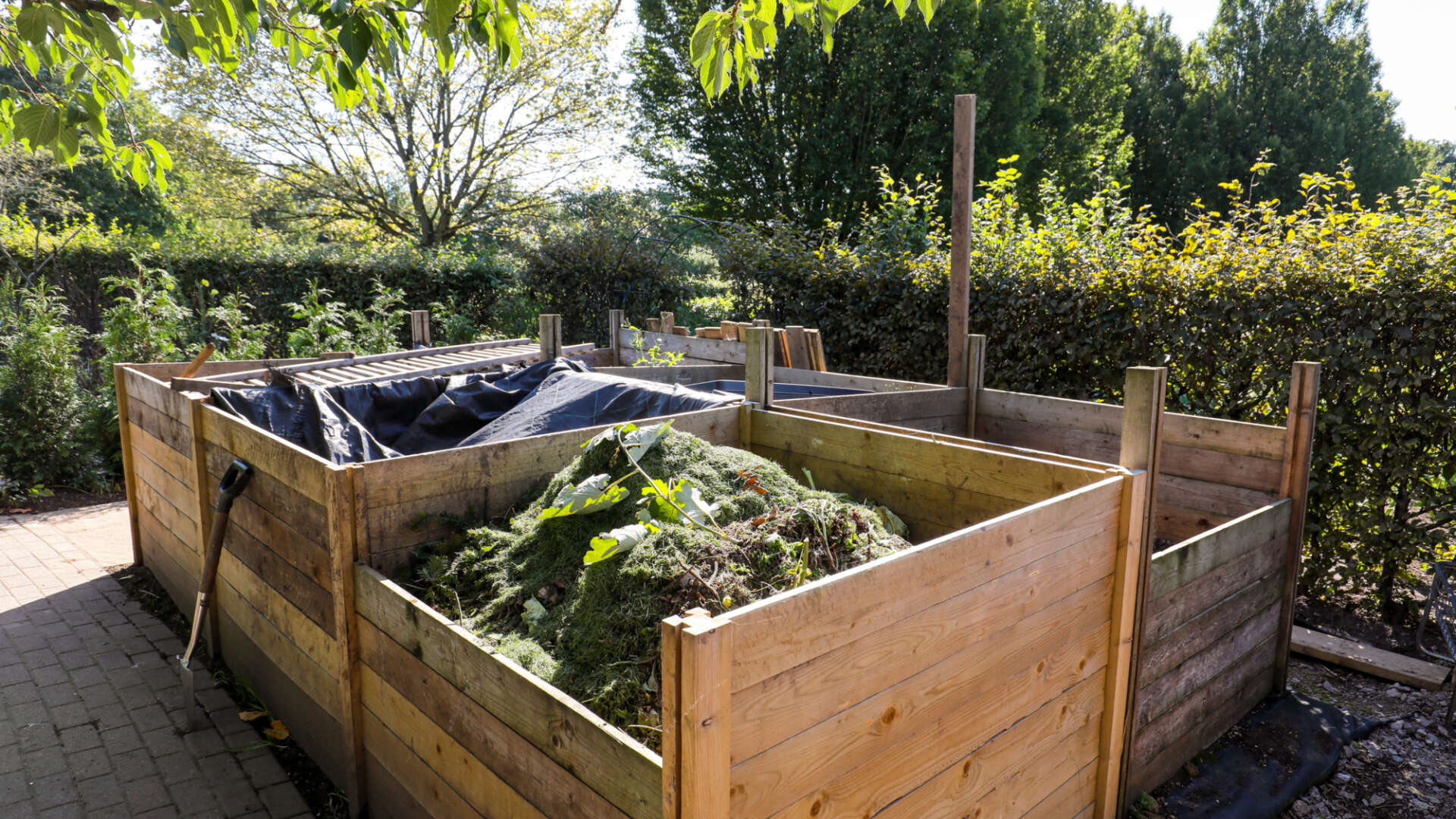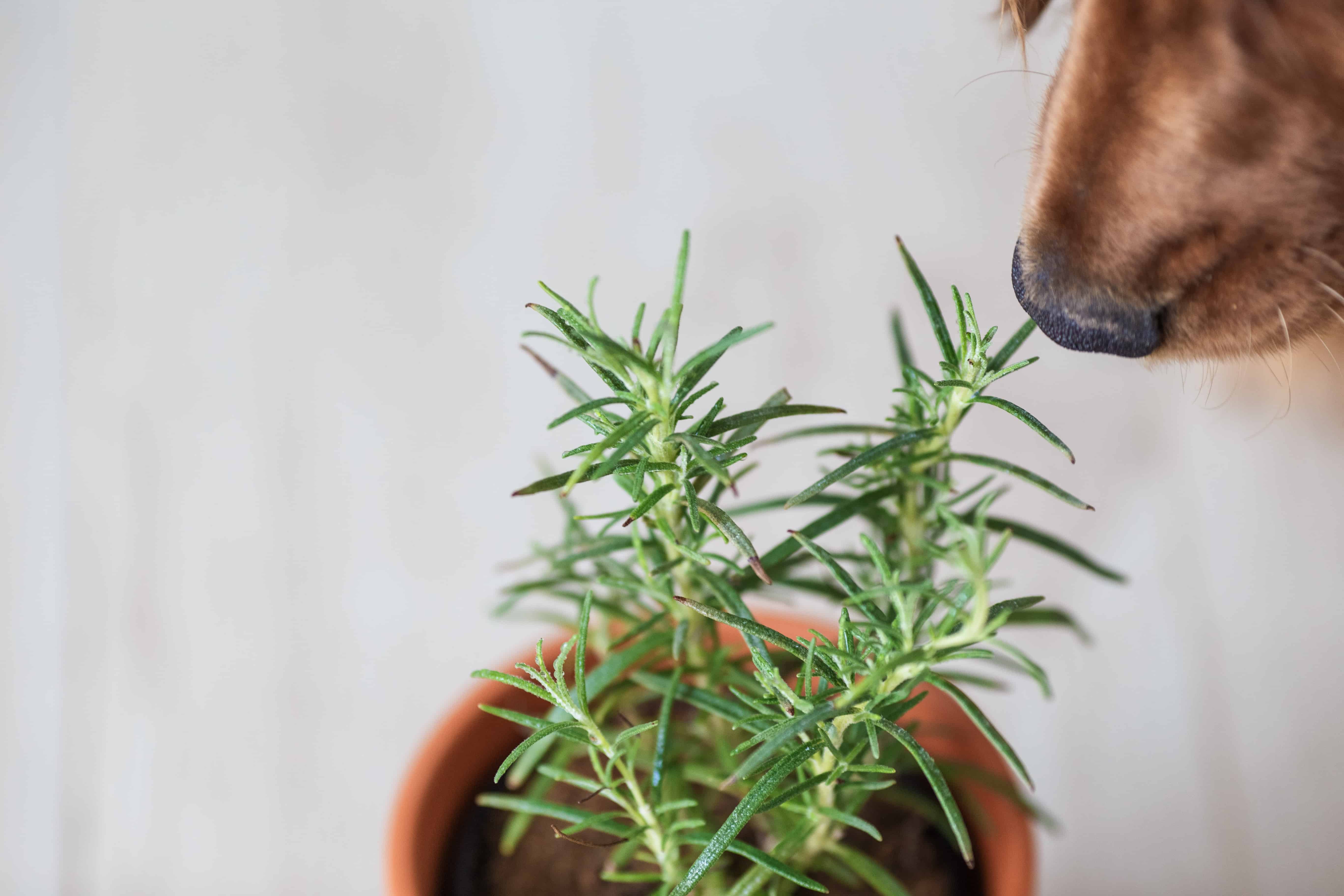Home>Gardening Tips and Tricks>Eco-Friendly Gardening>How To Compost Dog Poop


Eco-Friendly Gardening
How To Compost Dog Poop
Modified: January 22, 2024
Discover eco-friendly gardening practices with our comprehensive guide on how to compost dog poop. Turn waste into nutrient-rich soil for your garden!
(Many of the links in this article redirect to a specific reviewed product. Your purchase of these products through affiliate links helps to generate commission for Chicagolandgardening.com, at no extra cost. Learn more)
Table of Contents
Introduction
Welcome to the world of eco-friendly gardening! In today’s environmentally conscious society, practicing sustainable gardening methods is becoming increasingly popular. And one area where we can make a significant impact is by composting dog poop. Yes, you heard it right – composting dog poop!
Composting dog poop not only helps reduce the amount of waste entering landfills but also provides a valuable source of nutrient-rich compost for your garden. But before you grab your shovel and start composting, there are a few things you need to know. In this article, we will explore the benefits of composting dog poop, how to choose the right composting method, steps to prepare a composting area, as well as how to collect, store, and utilize composted dog poop in your garden.
While it may seem unusual to compost our furry friends’ waste, it offers numerous benefits. Not only does composting dog poop help minimize the environmental impact of waste disposal, but it also reduces the use of chemical fertilizers. By creating nutrient-rich compost, we can nourish our gardens naturally and promote healthier, more sustainable plant growth.
So, whether you’re a dedicated dog owner or a gardening enthusiast looking for ways to go green, composting dog poop is a fantastic option to consider. It’s a win-win situation for both the environment and your garden!
Benefits of Composting Dog Poop
Composting dog poop offers several advantages that go beyond just waste management. Let’s explore the benefits in more detail:
- Environmental sustainability: By composting dog poop, you are diverting waste from entering landfills, where it can take years to decompose. This helps reduce greenhouse gas emissions and minimizes the strain on our already overflowing landfills.
- Natural fertilizer: Composted dog poop serves as an excellent natural fertilizer for your garden. It contains essential nutrients like nitrogen, phosphorus, and potassium, which promote healthy soil fertility and plant growth. Plus, unlike chemical fertilizers, it does not pose a risk of leaching harmful substances into the environment.
- Cost-effective solution: Composting dog poop eliminates the need to purchase commercial fertilizers, saving you money in the long run. Instead of relying on synthetic alternatives, you can use the nutrient-rich compost to nourish your garden beds, flower pots, and vegetable patches.
- Reduced water consumption: Composted dog poop helps retain moisture in the soil, reducing the need for excessive watering. The organic matter in the compost improves soil structure, allowing it to hold water more effectively. This, in turn, conserves water and promotes water efficiency in the garden.
- Microbial activity: Dog poop contains various beneficial microorganisms that aid in the breakdown of organic matter. When you compost dog waste, these microorganisms break down the poop, releasing nutrients and improving the overall health of the soil ecosystem. This promotes a sustainable and balanced environment for your plants to thrive.
These benefits highlight the potential of composting dog poop as a sustainable gardening practice. By harnessing the power of nature, you can transform waste into a valuable resource that nurtures your garden and reduces your ecological footprint.
Choosing the Right Composting Method
When it comes to composting dog poop, choosing the right method is crucial for successful decomposition and ensuring that the compost is safe to use in your garden. Here are a few composting methods to consider:
- Hot Composting: Hot composting involves actively managing the compost pile to accelerate decomposition. This method requires a larger volume of dog poop and organic materials, such as leaves or grass clippings, to create a balanced carbon-to-nitrogen ratio. The pile must be regularly turned to provide oxygen and maintain high temperatures, typically above 130°F (55°C). This high heat helps kill any potential pathogens present in the dog waste.
- Worm Composting: Also known as vermicomposting, this method utilizes red worms (Eisenia fetida) to break down organic waste, including dog poop. Worms efficiently consume and decompose the waste, producing nutrient-rich worm castings that make excellent fertilizers. Worm composting is well-suited for smaller quantities of dog poop and can be done indoors or in a worm bin outdoors.
- Burying: Burying dog poop in dedicated composting areas is another option. Dig a hole at least 8 to 12 inches deep and bury the waste, covering it with soil. This method allows natural decomposition to occur over time. However, it is important to keep the buried waste away from edible crops and water sources to prevent potential contamination.
- Green Bin Collection: Some municipalities offer green bin or pet waste composting programs. Check with your local waste management services to see if this option is available. By participating in these programs, you can ensure that the collected dog poop is processed in specialized facilities, reducing its environmental impact.
When selecting a composting method, consider factors such as the quantity of dog poop you have, the available space, and your gardening needs. Each method has its own requirements and considerations, so choose the one that best suits your situation.
Remember, regardless of the composting method you choose, it is essential to follow proper hygiene practices and safety guidelines when handling dog waste. This includes wearing gloves, washing your hands thoroughly, and avoiding contact with the composted dog poop if you intend to use it on edible crops.
By selecting the appropriate composting method, you can effectively manage dog waste and transform it into a valuable resource for your garden.
Preparing a Composting Area
Before you start composting dog poop, it’s important to set up a designated composting area in your garden. Here are some key steps to take when preparing your composting area:
- Choose a suitable location: Select a location for your composting area that is well-drained and receives adequate sunlight. Avoid placing it near water sources or edible crops to prevent any potential contamination.
- Consider the size: Determine the size of your composting area based on the amount of dog poop you anticipate composting. It should be large enough to accommodate your compost pile or bin, with ample space for turning and aerating the compost.
- Prepare the ground: Clear the area of any debris, such as rocks or weeds, and level the ground. This will provide a stable foundation for your composting setup.
- Add a composting bin or structure: Depending on the composting method you choose, you may need to invest in a composting bin or build a composting structure. This will help contain the compost pile and provide proper aeration and drainage.
- Provide ventilation: If using a compost bin, ensure it has adequate ventilation such as slots or holes to allow for proper airflow. Good airflow is essential for the composting process as it helps prevent the development of unpleasant odors and encourages the breakdown of organic matter.
- Layering: Prepare the composting area by layering the dog poop with other organic materials such as dry leaves, straw, or wood chips. This will help create a balanced carbon-to-nitrogen ratio and enhance the composting process.
When setting up your composting area, it’s crucial to remember that dog waste should be kept separate from other compost piles that are intended for use on edible crops. This is to prevent potential contamination and ensure the safety of your garden produce.
By following these steps, you can create a dedicated composting area that promotes efficient decomposition and helps transform dog poop into valuable compost for your garden. Remember to regularly monitor and maintain the compost pile to ensure optimal conditions for decomposition.
Collecting and Storing Dog Poop
Proper collection and storage of dog poop are essential for effective composting. Here are some guidelines to follow:
- Use biodegradable poop bags: When picking up dog waste, always use biodegradable poop bags. These bags are designed to break down naturally over time, reducing their impact on the environment.
- Collect waste immediately: Scoop up dog poop as soon as possible to prevent it from contaminating your yard or garden. Regularly monitor and clean the area to maintain cleanliness and prevent the spread of harmful bacteria.
- Separate dog poop from other waste: Keep dog waste separate from other types of waste, such as food scraps or yard waste. This will make it easier to compost and ensure that potential pathogens from dog waste do not contaminate other materials.
- Store in a dedicated container: Use a dedicated container, such as a lidded bucket or sealed compost bin, to store the collected dog poop. This container should be secure and placed in a dry, well-ventilated area to minimize odors.
- Avoid flushing or burying in non-composting areas: Do not flush dog poop down the toilet or bury it in areas where composting is not intended. Flushing dog waste can strain sewage systems, and burying it without composting may lead to contamination of groundwater sources.
- Consider freezing: If you are not ready to compost the dog poop immediately, you can consider freezing it. Freezing helps control potential odor and prevents the growth of harmful bacteria. Just remember to thaw the waste before adding it to the compost pile.
It is important to note that dog waste should not be deposited in regular compost piles intended for use on edible crops. Instead, reserve it for dedicated dog waste composting areas.
By following these guidelines, you can ensure that dog waste is collected and stored in a safe and hygienic manner until it is ready to be composted. Proper handling and storage are key steps in the composting process to maintain cleanliness and prevent any potential health risks.
Creating a Compost Pile
Now that you have prepared your composting area and collected dog poop, it’s time to create a compost pile. Here’s a step-by-step guide to help you get started:
- Select the composting method: Decide on the composting method that aligns with your preferences and available resources. Whether you choose hot composting, worm composting, or burying, ensure you have all the necessary materials and equipment.
- Layering: Begin by adding a layer of organic materials to your compost pile. This can include dry leaves, straw, or wood chips. Aim for a ratio of approximately three parts carbon-rich materials (e.g., dried leaves) to one part nitrogen-rich materials (e.g., dog poop).
- Add dog poop: Place a layer of dog poop on top of the carbon-rich materials. Depending on the composting method, you may need to mix it with other organic waste or bedding material as well. This helps maintain a balanced carbon-to-nitrogen ratio, which is crucial for efficient decomposition.
- Continue layering: Alternate layers of dog poop with carbon-rich materials until you have incorporated all the waste. Each layer should be approximately 4-6 inches thick. Remember to avoid compacting the layers too much, as this can hinder airflow and slow down the composting process.
- Aerate the pile: To provide oxygen to the compost pile, regularly turn or aerate it. This can be done by using a pitchfork or shovel to mix the layers, ensuring that oxygen reaches all parts of the pile. Aeration helps promote microbial activity and decomposition.
- Monitor moisture levels: Check the moisture levels of the compost pile regularly. It should be moist, like a damp sponge, but not overly saturated. If the pile becomes too dry, add water to maintain moisture. If it becomes too wet, add additional carbon-rich materials to absorb excess moisture.
- Cover the pile: To retain heat and moisture, cover the compost pile with a tarp or a layer of straw. This helps create a controlled environment that promotes decomposition. However, ensure that the pile still receives adequate airflow to prevent foul odors or the development of anaerobic conditions.
Remember to regularly monitor and maintain your compost pile. Maintain proper moisture and temperature levels, and continue turning or aerating the pile every few weeks to enhance decomposition. With time and proper management, the compost pile will transform dog poop and other organic materials into nutrient-rich compost.
Now that your compost pile is set up, it’s time to learn how to maintain it effectively to ensure optimal decomposition.
Maintaining the Compost Pile
Proper maintenance of your compost pile is essential to ensure efficient decomposition and the production of high-quality compost. Here’s how to maintain your compost pile:
- Turning and aerating: Regularly turn or aerate the compost pile to provide oxygen and facilitate the breakdown of organic matter. This can be done every couple of weeks using a pitchfork or shovel. Turning the pile helps to distribute moisture, promote decomposition, and prevent the formation of anaerobic conditions.
- Monitoring moisture levels: Check the moisture content of the compost pile regularly. It should be moist, like a damp sponge, to support microbial activity and decomposition. If the pile is too dry, gently water it using a hose or watering can. If it’s too wet, add additional carbon-rich materials, such as dry leaves or straw, to absorb excess moisture.
- Ensuring proper temperature: Composting is an aerobic process that generates heat. Ideally, the compost pile should reach temperatures between 130°F (55°C) and 160°F (71°C) to promote the breakdown of organic matter and pathogens. Use a compost thermometer to monitor the temperature regularly and adjust the pile’s moisture and aeration levels if necessary.
- Adding organic materials: Over time, continue to add carbon-rich materials such as dried leaves, straw, or wood chips to the compost pile. This helps maintain a balanced carbon-to-nitrogen ratio and provides a steady supply of organic matter to promote decomposition.
- Managing odors: A well-maintained compost pile should not produce strong odors. However, if you notice foul smells, it may indicate an imbalance in the composting process. To combat odors, make sure you have a proper carbon-to-nitrogen ratio, maintain good aeration, and avoid adding any inappropriate waste materials.
- Patience and time: Composting is a natural process that requires time and patience. The decomposition of dog poop and other organic matter takes several months to a year, depending on various factors such as temperature, moisture, and the size of the compost pile. Be consistent with your maintenance efforts, and eventually, you will be rewarded with rich, nutrient-filled compost.
Remember to monitor your compost pile regularly to ensure it is progressing well. Pay attention to any signs of imbalances or issues and make adjustments accordingly. With proper maintenance, your compost pile will continue to break down dog poop and other organic materials, transforming them into valuable compost for your garden.
Using Composted Dog Poop in the Garden
After months of composting, the dog poop you diligently managed has transformed into nutrient-rich compost. Now, it’s time to reap the benefits and utilize this valuable resource in your garden. Here are some ways you can use composted dog poop:
- Soil amendment: Incorporate composted dog poop into your garden soil as a natural soil amendment. It improves soil structure, enhances water retention, and adds vital nutrients to support healthy plant growth. Mix the compost into the top few inches of soil before planting or use it as a side dressing for existing plants.
- Mulching: Spread a layer of composted dog poop around your plants to act as mulch. This helps suppress weed growth, regulate soil temperature, and conserve moisture. Apply a 2-4 inch layer of compost around the base of plants, ensuring not to smother any plant stems or trunks.
- Compost tea: Create a nutrient-rich compost tea by steeping composted dog poop in water. Use a ratio of one part compost to four parts water and let it sit for a few days. Strain the mixture and use the compost tea as a liquid fertilizer for your plants. Dilute it further with water before applying.
- Potting mix: Mix composted dog poop with other ingredients like perlite, coconut coir, and vermiculite to create a homemade potting mix. This organic blend provides a nutrient-rich environment for container plants, promoting healthy growth and reducing the need for synthetic fertilizers.
- Vegetable gardens: Use composted dog poop in your vegetable garden to boost organic matter and provide essential nutrients. However, exercise caution when using compost on edible crops. Apply the compost well in advance, preferably several months prior to planting, to ensure sufficient time for any potential pathogens to break down.
- Flower beds and ornamental plants: Incorporate composted dog poop into flower beds and around ornamental plants to enhance soil fertility and promote vibrant blooms. Top dress the soil with compost and gently work it into the top layer, being careful not to disturb the plant roots.
It is important to note that composted dog poop should not be used on edible crops that are consumed raw, as additional precautions may be necessary to ensure safety. Always practice good hygiene by wearing gloves and washing hands after handling composted dog poop.
By using composted dog poop in your garden, you are closing the loop, minimizing waste, and nurturing your plants with a natural and sustainable resource.
Safety Precautions and Considerations
While composting dog poop offers numerous benefits, it is important to keep in mind some safety precautions and considerations when handling and using the composted material. Here are a few key points to keep in mind:
- Use separate composting areas: Keep composted dog poop separate from compost piles intended for use on edible crops. This helps prevent any potential contamination and ensures the safety of your food produce.
- Avoid using compost on edible crops: Exercise caution when using composted dog poop on edible crops that are consumed raw. The compost should be applied well in advance and given sufficient time for any potential pathogens to break down.
- Wear gloves: Always wear gloves when handling dog waste and composted dog poop. This helps protect your hands from direct contact with any harmful bacteria that may be present.
- Practice good hygiene: Wash your hands thoroughly with soap and water after handling dog waste or working with composted dog poop. This helps prevent the spread of any germs or bacteria and minimizes the risk of contamination.
- Keep composted dog poop away from children and pets: Store and use composted dog poop in a secure location, out of reach of children and pets. Although composted, it is still waste material and should be treated with caution.
- Monitor for signs of pathogens: Regularly monitor the composting process to ensure that it is reaching sufficient temperatures and duration to kill any potential pathogens present in the dog waste. This can help minimize any health risks associated with using the compost in your garden.
- Follow local regulations and guidelines: Be aware of any specific regulations or guidelines set by your local municipality or waste management services regarding the composting of dog waste. Adhering to these guidelines ensures compliance and minimizes any potential environmental or health hazards.
By taking these safety precautions and considerations into account, you can minimize any potential risks and ensure the responsible and safe handling of dog waste and the utilization of composted dog poop in your garden.
Conclusion
Composting dog poop is not only an eco-friendly practice but also a way to turn waste into a valuable resource for your garden. By following the right composting methods, preparing a designated area, and maintaining the compost pile, you can transform dog waste into nutrient-rich compost that nourishes your plants and enhances soil fertility.
Throughout this article, we have explored the benefits of composting dog poop, the importance of choosing the right composting method, preparing a composting area, and collecting and storing dog waste. We also discussed the steps involved in creating and maintaining a compost pile and how to utilize the composted dog poop in your garden.
However, it is crucial to remember the safety precautions and considerations associated with handling and using composted dog poop. By following proper hygiene practices, ensuring separate composting areas, and adhering to local regulations, you can use the compost safely and responsibly.
Composting dog poop allows us to reduce waste, minimize our environmental impact, and promote sustainable gardening practices. It’s a way to give back to the environment and create a healthier, more vibrant garden. So, why not embrace the eco-friendly gardening journey and start composting your dog’s waste today?

